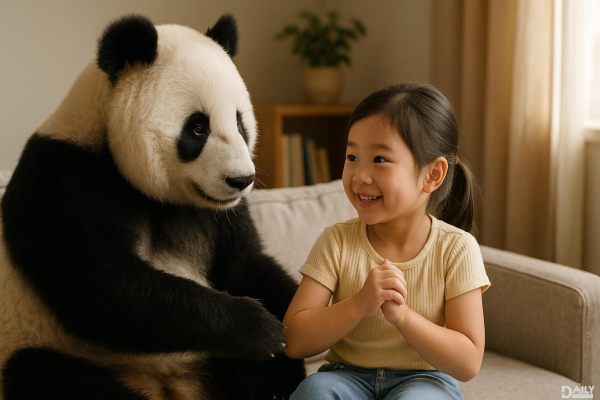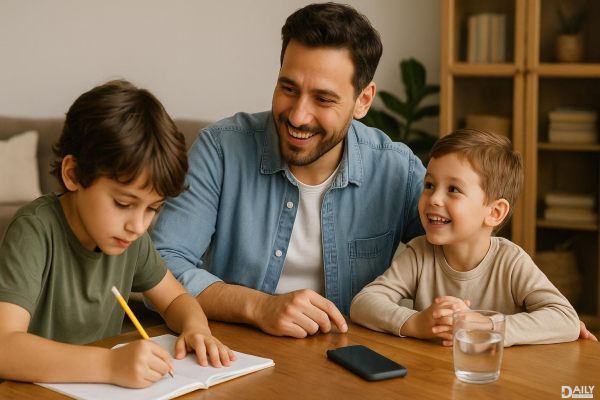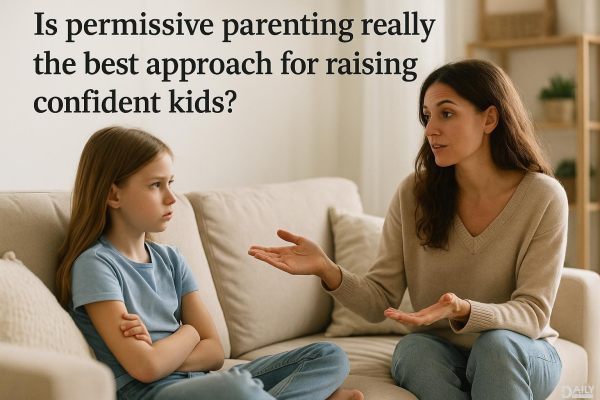Panda parenting is the laid-back, nurturing approach to raising kids that’s all about balance, connection, and letting them grow at their own pace. Unlike the strict "tiger mom" style or the overly permissive "free-range" method, panda parenting is about being present, supportive, and chill—like a panda lounging in a bamboo forest. It’s about guiding kids without micromanaging, encouraging them without pressuring, and helping them thrive without the stress. If you’re looking for a parenting style that’s both gentle and effective, panda parenting might just be your jam.

Panda parenting is inspired by the calm, nurturing nature of pandas in the wild. These creatures are known for their patience, attentiveness, and ability to let their cubs explore while keeping a watchful eye. In human terms, it’s about being emotionally available, setting boundaries without being overbearing, and fostering independence in a loving way. Think of it as the Goldilocks of parenting—not too strict, not too lenient, but just right. It’s about creating a safe space where kids can learn, grow, and make mistakes without fear of harsh judgment or punishment.
At its heart, panda parenting is built on a few key principles. First, it’s about being present—not just physically, but emotionally. This means actively listening to your kids, validating their feelings, and showing empathy. Second, it’s about balance. Panda parents know when to step in and when to step back, allowing their kids to problem-solve and learn from their experiences. Third, it’s about fostering a growth mindset. Instead of focusing on perfection, panda parents encourage effort, resilience, and curiosity. And finally, it’s about modeling calmness and patience. Kids pick up on our energy, so staying cool under pressure sets the tone for a stress-free environment.
Panda parenting works because it aligns with how kids naturally develop. When children feel safe, supported, and understood, they’re more likely to take risks, explore their interests, and build confidence. This approach also reduces stress—for both parents and kids. By avoiding the pressure to constantly perform or meet unrealistic expectations, kids can focus on learning and growing at their own pace. Plus, panda parenting strengthens the parent-child bond, creating a foundation of trust and open communication that lasts a lifetime.
So, how do you actually put panda parenting into action? Start by being intentional about your interactions. When your child comes to you with a problem, listen without immediately jumping to solutions. Ask open-ended questions like, “What do you think you could do about that?” This encourages critical thinking and independence. Next, set clear but flexible boundaries. For example, instead of saying, “You must finish your homework by 7 PM,” try, “Let’s figure out a schedule that works for you.” This gives kids a sense of control while still keeping them on track. Finally, prioritize connection. Whether it’s through family dinners, game nights, or just hanging out, make time to bond and have fun together.
Some people think panda parenting is just about being lazy or letting kids do whatever they want. But that’s not the case at all. Panda parenting is about being intentional and thoughtful in your approach. It’s not about avoiding discipline or letting kids run wild—it’s about teaching them self-discipline and responsibility in a way that feels supportive rather than punitive. Another misconception is that panda parenting is only for certain types of kids. In reality, this approach can work for any child, regardless of their personality or temperament. It’s all about adapting to their unique needs and strengths.
One of the biggest perks of panda parenting is the reduction in stress—for everyone. When parents aren’t constantly nagging, hovering, or worrying, they can enjoy the journey of raising their kids. And when kids aren’t feeling pressured or judged, they’re more likely to thrive academically, socially, and emotionally. Studies show that children who grow up in low-stress environments are better at problem-solving, have higher self-esteem, and are more resilient in the face of challenges. Plus, a calm household just makes life more enjoyable for everyone involved.
If you’re used to a more traditional or strict parenting style, transitioning to panda parenting might feel a little awkward at first. Start by reflecting on your current approach and identifying areas where you can loosen up. For example, if you tend to micromanage your child’s homework, try stepping back and letting them take the lead. It’s also helpful to practice self-compassion. Parenting is hard, and it’s okay to make mistakes. The key is to learn from them and keep moving forward. Finally, seek support if you need it. Whether it’s through parenting books, online communities, or talking to a trusted friend, you don’t have to figure it all out on your own.
Let’s say your 8-year-old is struggling with a math assignment. Instead of hovering over them and correcting every mistake, a panda parent might say, “I can see this is tricky for you. What part are you finding the hardest?” This opens up a dialogue and encourages the child to think critically. Or, if your teenager wants to dye their hair bright blue, a panda parent might respond with, “That’s a bold choice! What’s inspiring you to do that?” This shows curiosity and support without immediately shutting them down. These small shifts in communication can make a big difference in how kids feel and behave.
Over time, panda parenting helps kids develop into confident, capable, and compassionate adults. By teaching them to trust their instincts, embrace challenges, and value effort over perfection, you’re setting them up for success in all areas of life. Plus, the strong bond you build through this approach ensures that your relationship with your child remains close and meaningful, even as they grow older. In a world that’s often fast-paced and high-pressure, panda parenting offers a refreshing alternative—one that prioritizes well-being, connection, and joy.
Panda parenting isn’t about being perfect or having all the answers. It’s about being present, patient, and kind—both to your kids and to yourself. By embracing this gentle approach, you can create a home environment where everyone feels supported, valued, and free to be themselves. So, take a cue from the pandas, and let your parenting style be as calm and nurturing as a bamboo forest. Your kids—and your sanity—will thank you.
























